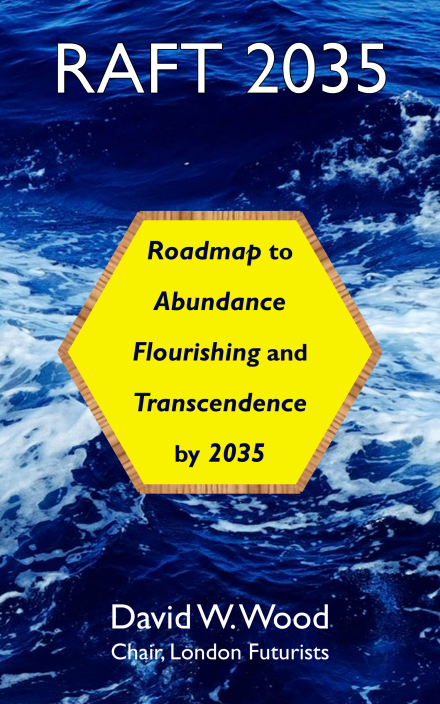This page contains the opening portion of Chapter 8 from
Sustainable Superabundance: A universal transhumanist invitation

8. Towards abundant health
To recap the previous three chapters: there are good grounds for anticipating that, in the not-so-distant future, there can be plenty of clean energy for all human activities, plenty of nutritious food for everyone, and plenty of material goods for all our worldly needs. Twenty first century science and technology place these abundances within our grasp – provided that we are wise enough, and sufficiently strong and agile, to embrace the opportunity.
However, these abundances, by themselves, will be far from sufficient to ensure that human flourishing reaches its full potential.
If, despite an abundance of energy, nutrition, and material goods, our medical health continues to deteriorate as we grow older, then, just as at present, individual human flourishing will be cut short, again and again.
As our health deteriorates, we will be increasingly restricted in what we can do. With feeble bodies and/or feeble minds, we may observe a growing abundance of energy, nutrition, and material goods all around us, but we won’t be able to take advantage of that bounty. As individuals in decline, we’ll move from activity to passivity, from engagement to detachment, from vigour to lethargy, from precision to dullness, and from being to nothingness. Rather than flourish, we’ll flounder and fade away.
So far in history, a deterioration of human health has, sooner or later, been the story of everyone’s life. In some cases, a person’s health declines precipitously, due to a catastrophic accident or harsh act of violence. In other cases, their health declines gradually, due to the impact of one or more diseases or conditions that reduce mental or physical capability, until the point of death. Either way, after a few short decades of life, consciousness ceases. Brains turn to dust. Loving relationships are severed. Each time a single person dies, vast troves of human experience are lost, comparable to the burning down of a library, in a calamitous transformation of knowledge into ashes. Such, it appears, is the brutality of nature.
But transhumanists assert that these brutal “facts of nature” are on the point of being overturned. Thanks to further applications of twenty first century science and technology, the terminal decline of health will no longer be inevitable, but will soon be something we can resist and reverse. Aging can be abolished. In consequence, the vistas for human flourishing can extend mightily, both for individuals and for humanity as a whole.
Rejuvenation ahead
In more detail, the restorative biological properties that we presently experience in our youth, which enable us to bounce back quickly from injury or illness, will no longer lose their power as decades pass. Instead, it will become possible in the not-so-distant future to extend these restorative self-healing powers indefinitely – thanks to a combination of biochemical and nanotech interventions made possible by accelerating progress in regenerative medicine and rejuvenation biotechnology.
As a result, we humans will be as vibrant and resilient in our eighties as in our twenties. If we wish it, we’ll be able to live well past the age of 100 without any decline in our health. Indeed, if we wish it, we’ll be able to live well past the age of 1000, without any decline in our health.
These restorative processes will not only be extended in their duration, but they will also grow in their scope and effectiveness. Diseases which formerly threatened even the most robust physical constitution will be cured quickly. The sinister destructive power of new pathogens will meet their match in the constructive restorative power of highly intelligent, swiftly adapting, personalised suites of biomedical therapies. Due to continuous monitoring of all our vital statistics, and of threats in our environment, corrective interventions can be triggered at much earlier stages in the downward spiral of bodily dysfunction. We will hardly notice that we were, momentarily, ill.
And not only will we remain fit and healthy for as long as we wish, but we will grow even fitter and healthier than we can presently imagine. The transhumanist vision of “better than well” is within our reach – but only if we rapidly alter society’s priorities to give much more attention to this possibility of an unlimited abundance of health.
<snip>

